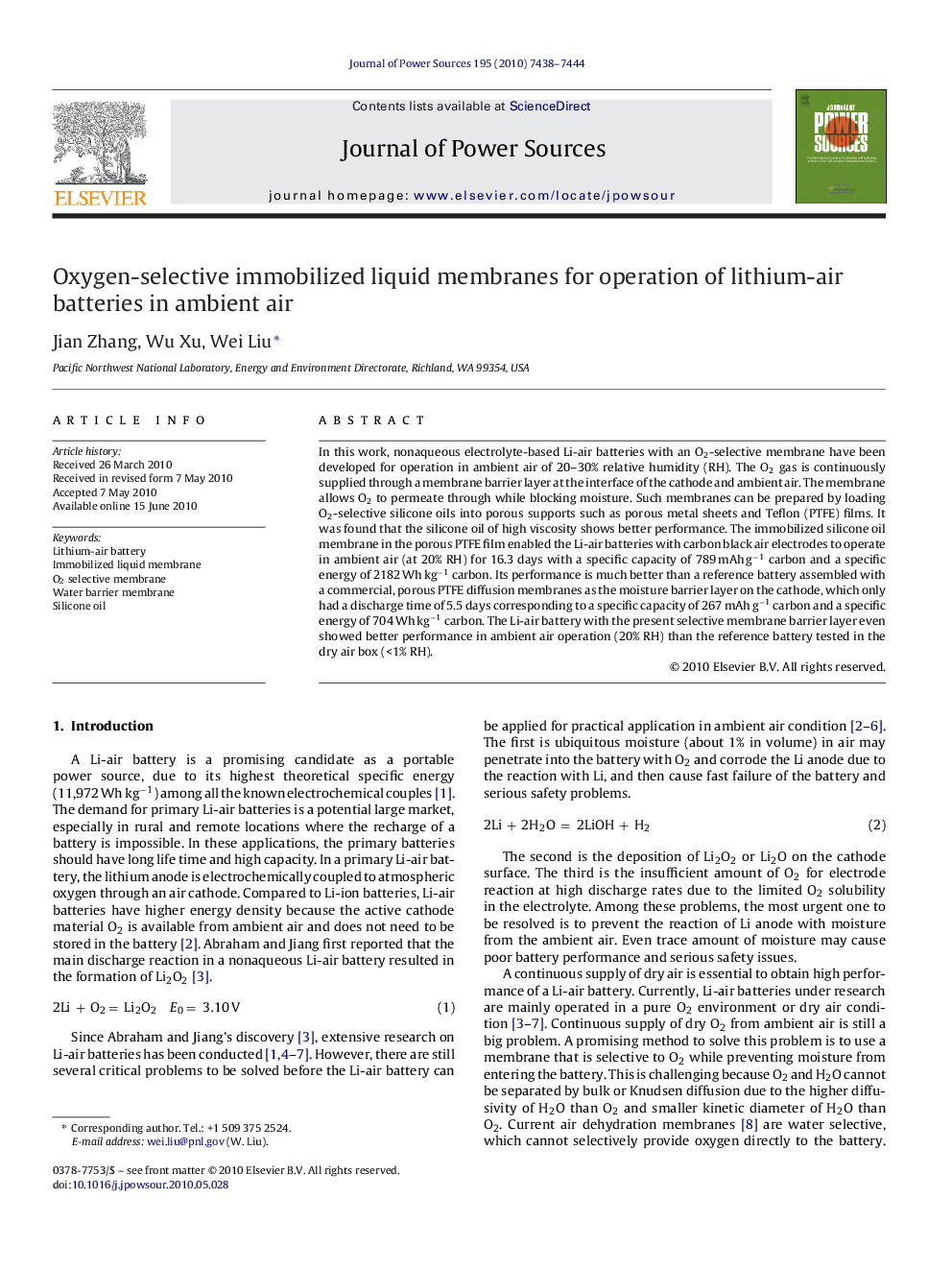| Article ID | Journal | Published Year | Pages | File Type |
|---|---|---|---|---|
| 1284898 | Journal of Power Sources | 2010 | 7 Pages |
In this work, nonaqueous electrolyte-based Li-air batteries with an O2-selective membrane have been developed for operation in ambient air of 20–30% relative humidity (RH). The O2 gas is continuously supplied through a membrane barrier layer at the interface of the cathode and ambient air. The membrane allows O2 to permeate through while blocking moisture. Such membranes can be prepared by loading O2-selective silicone oils into porous supports such as porous metal sheets and Teflon (PTFE) films. It was found that the silicone oil of high viscosity shows better performance. The immobilized silicone oil membrane in the porous PTFE film enabled the Li-air batteries with carbon black air electrodes to operate in ambient air (at 20% RH) for 16.3 days with a specific capacity of 789 mAh g−1 carbon and a specific energy of 2182 Wh kg−1 carbon. Its performance is much better than a reference battery assembled with a commercial, porous PTFE diffusion membranes as the moisture barrier layer on the cathode, which only had a discharge time of 5.5 days corresponding to a specific capacity of 267 mAh g−1 carbon and a specific energy of 704 Wh kg−1 carbon. The Li-air battery with the present selective membrane barrier layer even showed better performance in ambient air operation (20% RH) than the reference battery tested in the dry air box (<1% RH).
